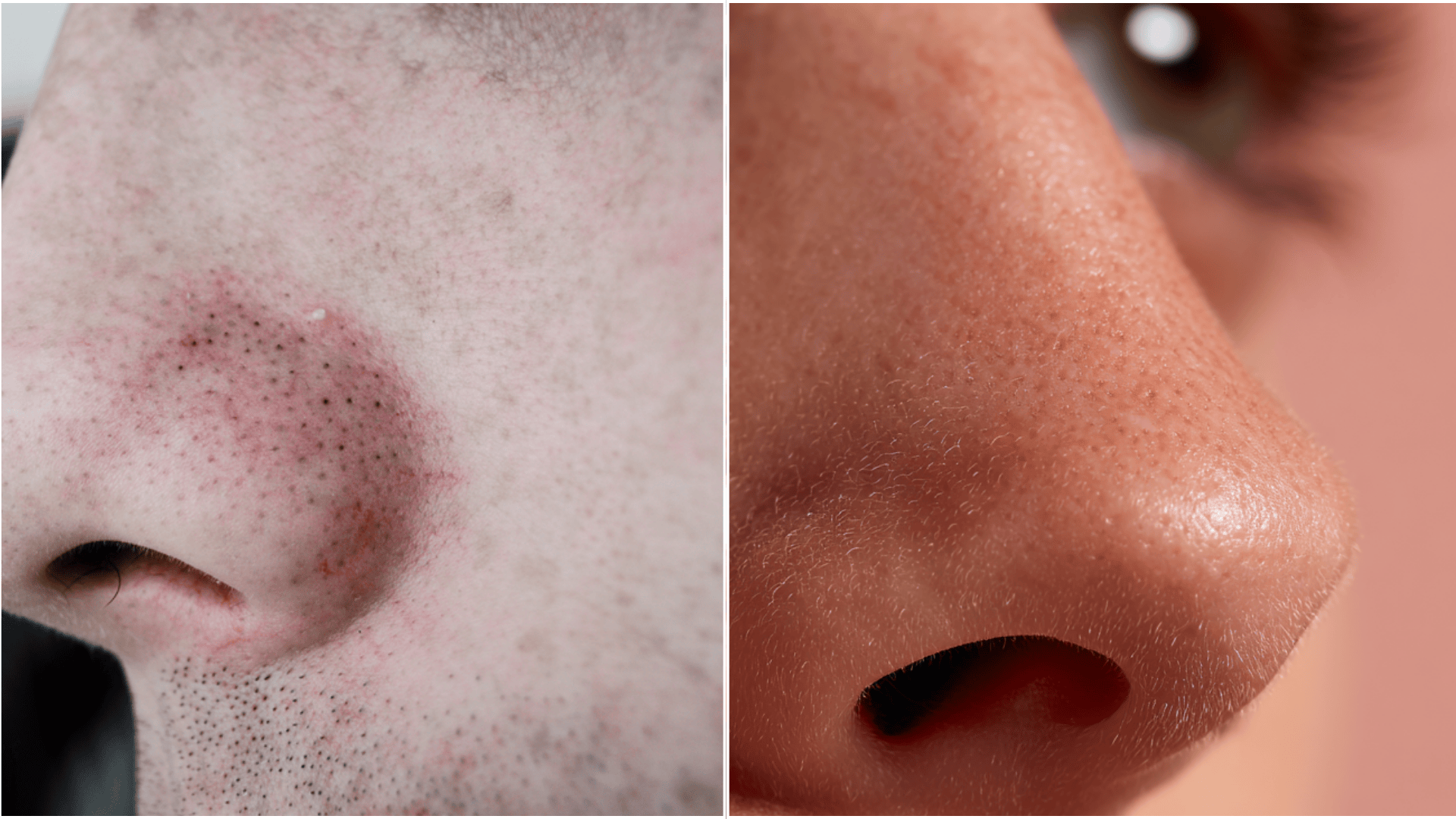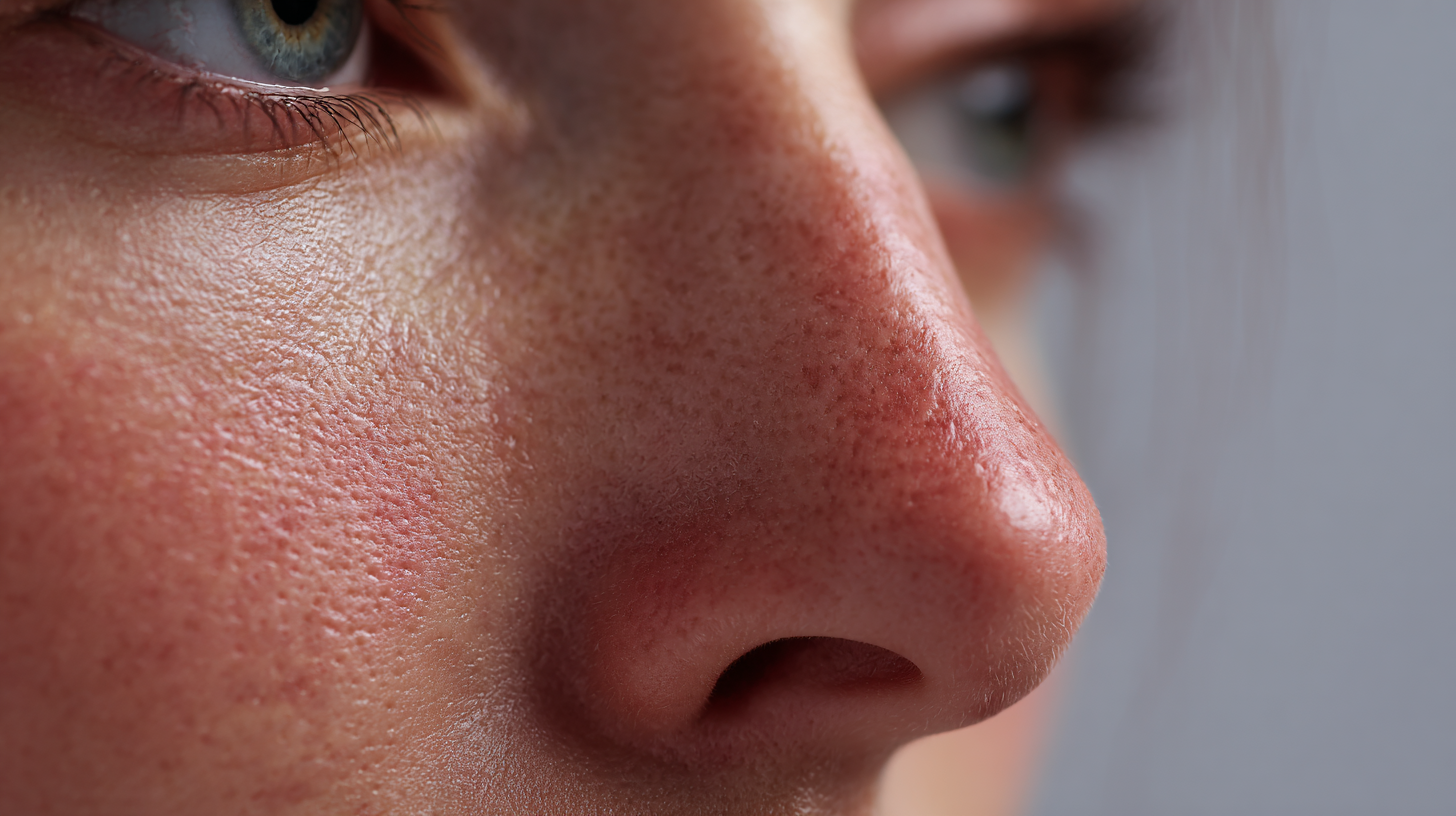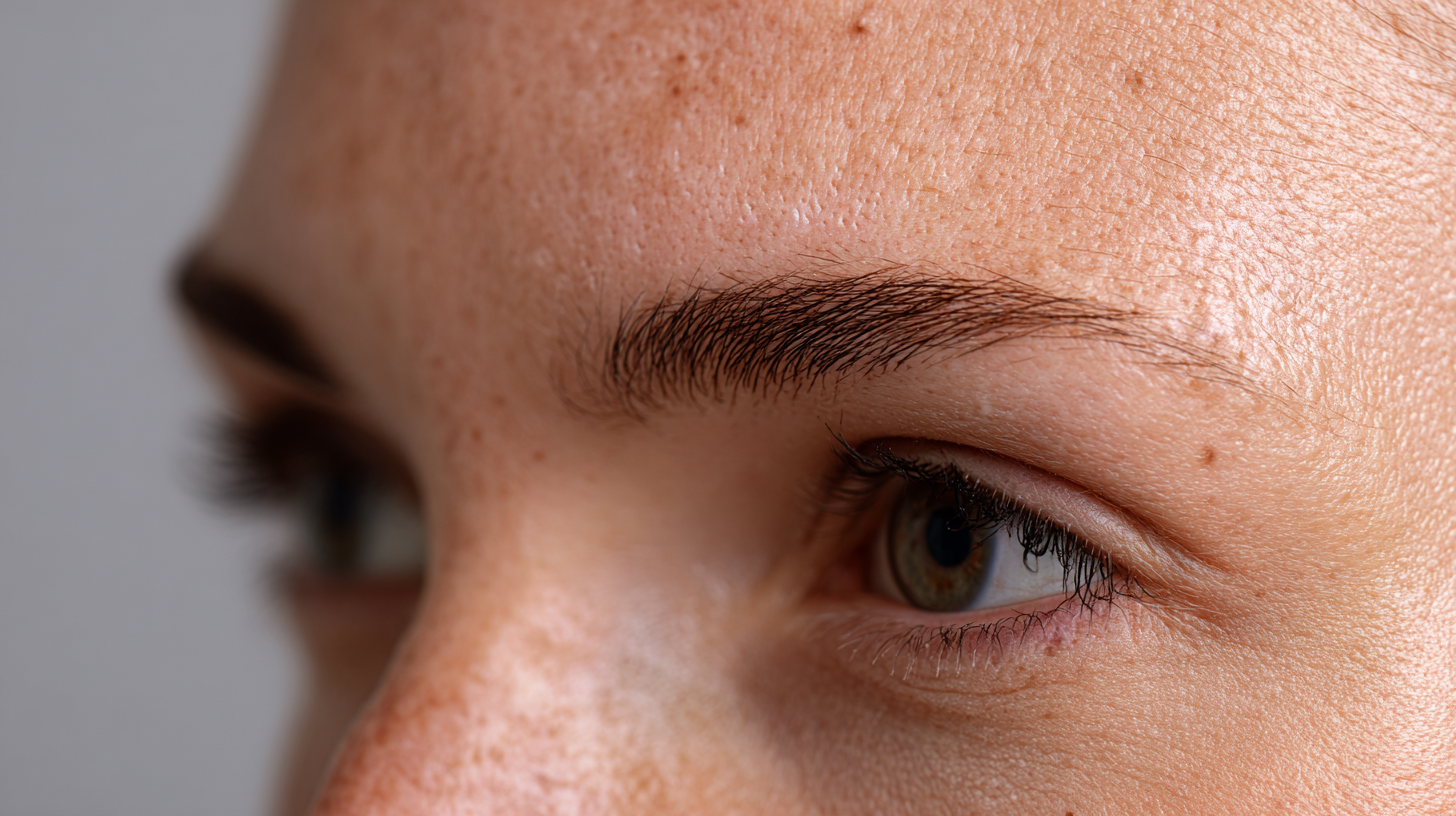You look in the mirror and notice tiny dark dots across your nose and forehead. Are they blackheads? Should you squeeze them out? Rush to buy acne treatments?
Hold on. Those dots might not be blackheads at all. They could be sebaceous filaments, something completely normal that everyone has.
The difference matters because treating them the wrong way can actually damage your skin.
If you’ve been battling what you think are stubborn blackheads on your forehead without success, you might be fighting the wrong enemy.
This guide will explain exactly what each one is, how to tell them apart (especially on your forehead, where they’re most visible), and the right way to handle both.
What Are Sebaceous Filaments?
Sebaceous filaments are natural structures inside your pores that help oil (called sebum) travel from deep in your skin to the surface.
They appear most often in oily zones like your nose, chin, and forehead, areas where you have more oil glands.
On the forehead, sebaceous filaments often show up as many small dots in an even pattern.
Here’s what they look like: light grey, yellowish, or tan colored. They’re flat against your skin, not raised.
And here’s the key thing: they refill constantly because they’re part of how your skin naturally works.
Sebaceous filaments aren’t a skin problem. They’re normal skin physiology. Everyone has them, though they’re more visible on people with oily skin or larger pores.
What Are Blackheads?
Blackheads are a type of acne. Doctors call them “open comedones.” They form when a pore gets clogged with oil, dead skin cells, and sometimes bacteria.
When this plug reaches the surface and gets exposed to air, it oxidizes, which means it turns dark or black.
Unlike sebaceous filaments, blackheads are an actual acne lesion that needs treatment. They often appear in the same oily areas (nose, forehead, chin, back), but they look different.
Blackheads are truly dark (black or dark brown) and may appear slightly raised or “plugged.”
If left untreated, blackheads can worsen into inflamed pimples or acne. They’re not dangerous, but they’re worth addressing if you want clearer skin.
How to Tell Them Apart at a Glance?

Confused about what you’re seeing on your forehead? Here’s how to identify which is which:
- Color check: Blackheads are truly dark (black or dark brown); sebaceous filaments are light grey, yellowish, or tan.
- Texture and pattern: Filaments appear as small flat dots in uniform patterns; blackheads look irregular, raised, or “plugged.”
- Gentle pressure test: Blackheads yield a dark plug when pressed; filaments release oil but refill within hours or days.
- Location clue: Many small, evenly spaced, light-colored dots across your forehead usually mean sebaceous filaments, not blackheads.
- Risk factor: Blackheads can progress into inflamed acne; filaments typically don’t cause problems unless secondary clogging occurs.
If your forehead dots aren’t very dark and appear in an even pattern, they’re likely normal sebaceous filaments that need gentle care, not aggressive acne treatment.
Key Differences at a Glance
Still confused? Here’s a quick comparison table to help you identify what you’re dealing with:
| Feature | Sebaceous Filaments | Blackheads |
|---|---|---|
| Nature | Normal skin physiology | Acne lesion |
| Color/Appearance | Light grey, yellowish, tan | Black, dark brown, raised |
| Treatment Need | Cosmetic concern only | Should be managed |
| After Extraction | Refills quickly (hours/days) | May resolve with treatment |
Understanding these differences helps you choose the right approach: gentle maintenance for filaments, active treatment for blackheads.
Causes and Symptoms
Understanding what causes each condition helps you choose the right treatment approach. Here’s what you need to know about why they appear and what signs to look for:
Sebaceous Filaments
Sebaceous filaments are caused by natural oil (sebum) production in your skin.
If you have larger or more active sebaceous glands, thicker hair follicles, or genetically oily skin, your filaments will be more visible.
This is especially common on the forehead and nose, where oil glands are more concentrated.
Symptoms:
- Visible light-colored dots on the forehead, nose, and chin
- No inflammation or pain
- Flat appearance against the skin
- Purely cosmetic concern
Blackheads
Blackheads form when excess sebum combines with dead skin cells and sometimes bacteria to create a plug inside your pore.
When this plug reaches the surface and gets exposed to air, it oxidizes, turning dark or black.
Hormones, genetics, certain medications, and heavy skincare products can all contribute to blackhead formation.
Symptoms:
- Dark (black or brown) open pores
- May be slightly raised or “plugged”
- It can worsen into inflamed pimples if untreated
- May cause tenderness if inflamed
Why to Leave Sebaceous Filaments Alone (And Risks of Mistreatment)

Here’s the important part: Sebaceous filaments are part of healthy skin-oil management. They’re supposed to be there.
Aggressive removal can damage your pores, stretch them out, cause irritation, enlarge pores permanently, or even lead to scarring. It’s like trying to “fix” your skin by breaking something that actually works.
Over-stripping oil from your skin can also backfire. When you strip away too much oil, your skin may respond by producing even more oil to compensate. This makes filaments look more visible, not less.
Finally, treating filaments as if they’re blackheads wastes your time, money, and effort while risking unnecessary skin damage.
Prevention Strategies
The best approach is prevention. Here’s how to keep both conditions under control with consistent daily habits:
For Sebaceous Filaments:
- Daily gentle cleansing plus chemical exfoliant 2-3 times per week
- Use a non-comedogenic moisturizer to protect your skin barrier
- Don’t pick or stretch pores (this makes them more visible)
For Blackheads:
- Regular cleansing, especially at night
- Keep hair products and oils away from your face
- Avoid heavy, occlusive products that can clog pores
- Incorporate retinoids or BHA early if you notice clogged pores developing
- Avoid heavy scrubbing or aggressive pore extracts that worsen inflammation
Managing Sebaceous Filaments: Minimizing Visibility

Since filaments are normal, your goal isn’t to eliminate them but to minimize how visible they are, especially on your forehead and nose.
1. Gentle Chemical Exfoliation
Use BHA (salicylic acid) cleansers to clear excess oil without stripping your skin. Products with salicylic acid help keep pores clear and can make filaments less noticeable.
Apply 2-3 times per week for best results.
2. Retinoid Treatment
Consider retinoids or gentle exfoliants. These help regulate the pore lining and reduce how prominent filaments appear on your forehead and nose. Start slowly to avoid irritation.
3. Proper Moisturization
Use a good, non-comedogenic moisturizer. Even oily skin needs moisture. Choose products labeled “non-comedogenic,” which means they won’t clog pores.
What to Avoid: Don’t over-extract. Pore strips might be tempting, but use them rarely if at all. They can damage skin and stretch pores over time, making filaments more visible.
Treating Blackheads: Active Acne Management

Blackheads need actual acne treatment with targeted ingredients that clear clogs and prevent new ones from forming.
1. Topical Acne Treatments
Use topical retinoids, salicylic acid, or benzoyl peroxide as part of an acne-targeted routine. These ingredients help clear existing clogs and prevent new blackheads. Be consistent, results take 4-6 weeks.
2. Professional Treatments
If blackheads are persistent, consider professional extraction or chemical peels from a dermatologist or esthetician. These can provide deeper cleaning than at-home treatments.
3. Consistent Skincare Routine
Focus on a three-step routine: cleanse (to remove dirt and oil), treat (with acne-fighting ingredients), and protect (with sunscreen during the day to prevent damage and darkening).
Bottom Line
If you’re spotting many tiny light-grey-to-yellowish dots, especially on your forehead, you’re likely seeing sebaceous filaments. Treat them gently and don’t panic. They’re normal.
But if you see dark plugs or raised, comedonal bumps, those are blackheads that need a targeted treatment approach.
Knowing the difference is the first step to healthy skin. Stop fighting your skin’s natural oil-management system and start working with it instead.
Your turn: Have you been mistaking sebaceous filaments for blackheads? What’s your biggest challenge with forehead skin care?
Share your experience in the comments below. Let’s help each other achieve clearer, healthier skin!







